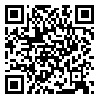جلد 9، شماره 1 - ( 11-1398 )
جلد 9 شماره 1 صفحات 17-12 |
برگشت به فهرست نسخه ها
Download citation:
BibTeX | RIS | EndNote | Medlars | ProCite | Reference Manager | RefWorks
Send citation to:



BibTeX | RIS | EndNote | Medlars | ProCite | Reference Manager | RefWorks
Send citation to:
Jafarian A, Sina S, Safari R. Research Paper: Investigation of Organ Dose in Dental CBCT Using GATE Monte-Carlo Code. Journal title 2020; 9 (1) :12-17
URL: http://3dj.gums.ac.ir/article-1-370-fa.html
URL: http://3dj.gums.ac.ir/article-1-370-fa.html
Research Paper: Investigation of Organ Dose in Dental CBCT Using GATE Monte-Carlo Code. عنوان نشریه. 1398; 9 (1) :12-17
چکیده: (1390 مشاهده)
Introduction: Patient dose is the most important concern for any new X-ray system. The dose received by the patients depends on the imaging technique, the optimization of the collimator, filtration and field of view (FOV). The purpose of this study is to evaluate the effect of various imaging parameters on dose received by different organs in a dental CBCT scanners.
Materials and Methods: In this study, dental CBCT system (Planmeca 3d mid) including the X-ray tube, flat panel detector and a voxelized phantom, was simulated by the GATE Monte-Carlo Code (Version 8). DICOM CBCT images of a person, and Alderson Rando phantom were segmented using MATLAB and 3D slicer software to identify various organs such as bone, bone marrow, soft tissue, brain and thyroid.Results: The half value layer of the simulated X-ray was found to be 2.6 mm which differed from the experimental value by approximately 6.47%. In some cases, the 3D dose distribution for Rando Phantom was less than that for Voxelized phantom simulated by CT images of a normal person.
Conclusion: The reason of this difference is attributed to the different substances definition. The difference in experimental and simulation data can be due to several reasons i.e. the inaccuracy caused by the use of a limited number of TLDs in experimental measurements, the impossibility of simulating Gentry’s actual rotation(hyperbolic’s rotation) and the uncertainties caused by converting CT images to e Voxelized phantom.
Materials and Methods: In this study, dental CBCT system (Planmeca 3d mid) including the X-ray tube, flat panel detector and a voxelized phantom, was simulated by the GATE Monte-Carlo Code (Version 8). DICOM CBCT images of a person, and Alderson Rando phantom were segmented using MATLAB and 3D slicer software to identify various organs such as bone, bone marrow, soft tissue, brain and thyroid.Results: The half value layer of the simulated X-ray was found to be 2.6 mm which differed from the experimental value by approximately 6.47%. In some cases, the 3D dose distribution for Rando Phantom was less than that for Voxelized phantom simulated by CT images of a normal person.
Conclusion: The reason of this difference is attributed to the different substances definition. The difference in experimental and simulation data can be due to several reasons i.e. the inaccuracy caused by the use of a limited number of TLDs in experimental measurements, the impossibility of simulating Gentry’s actual rotation(hyperbolic’s rotation) and the uncertainties caused by converting CT images to e Voxelized phantom.
| بازنشر اطلاعات | |
 | این مقاله تحت شرایط Creative Commons Attribution-NonCommercial 4.0 International License قابل بازنشر است. |


